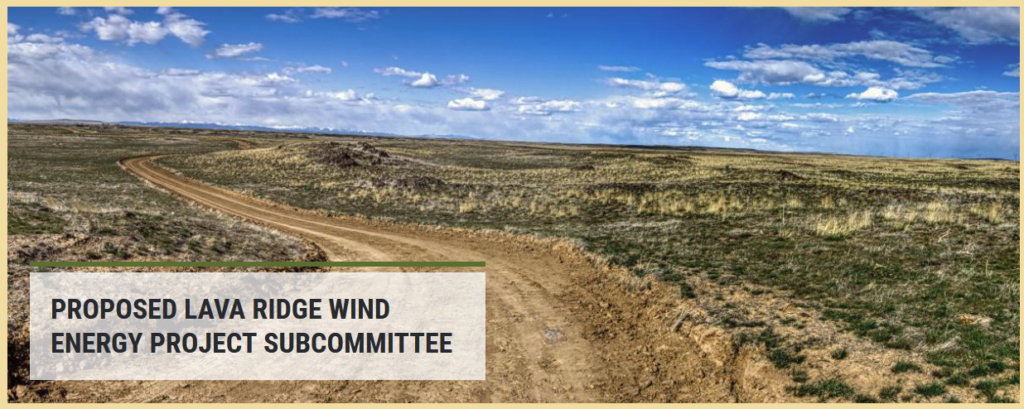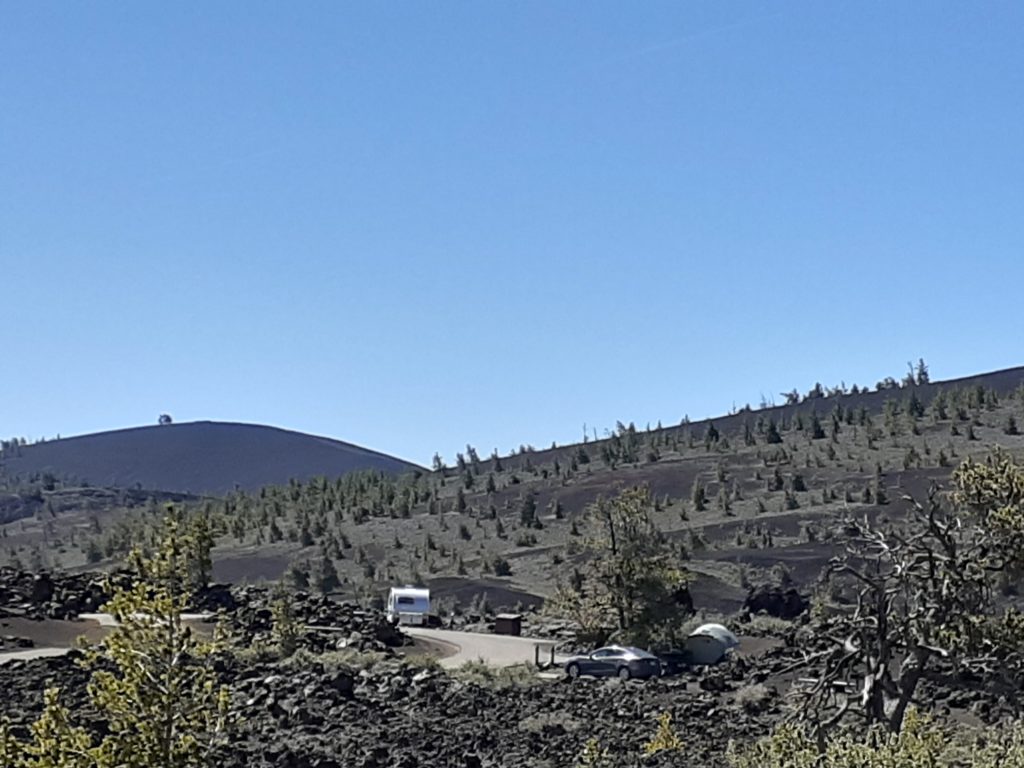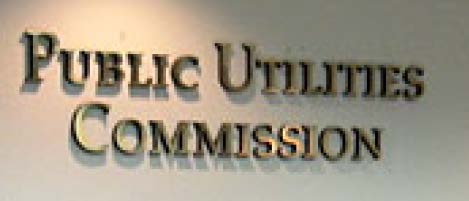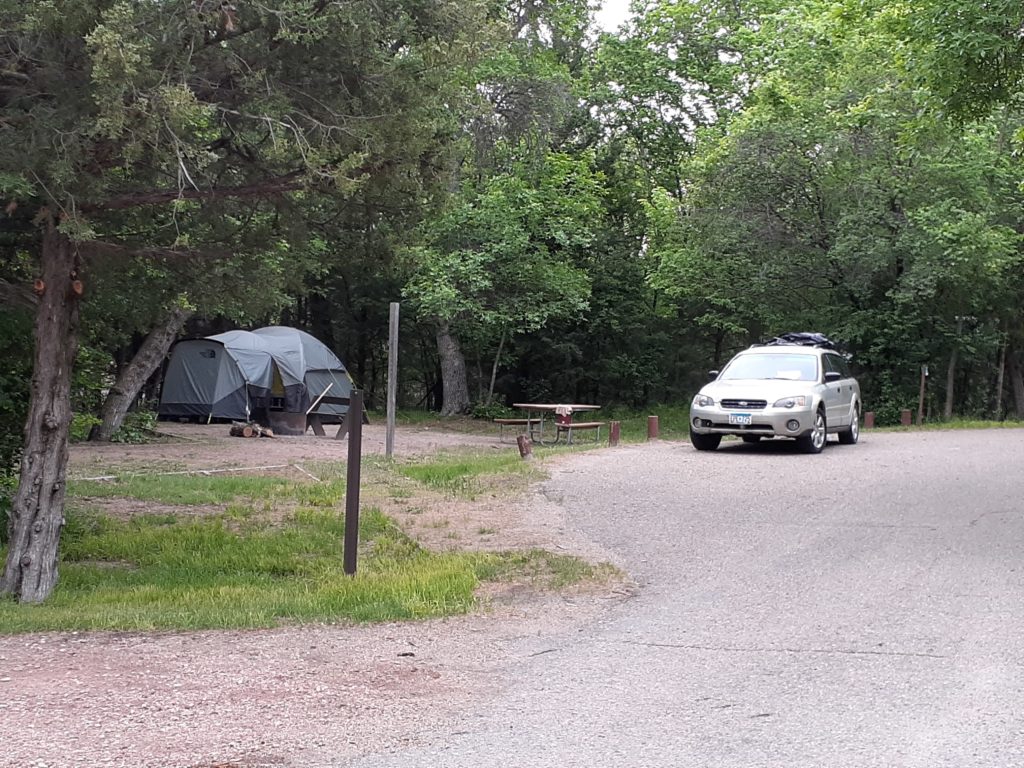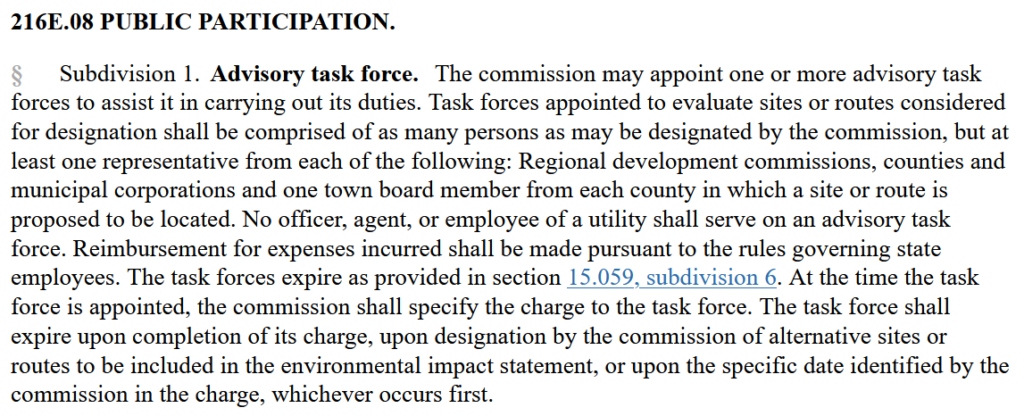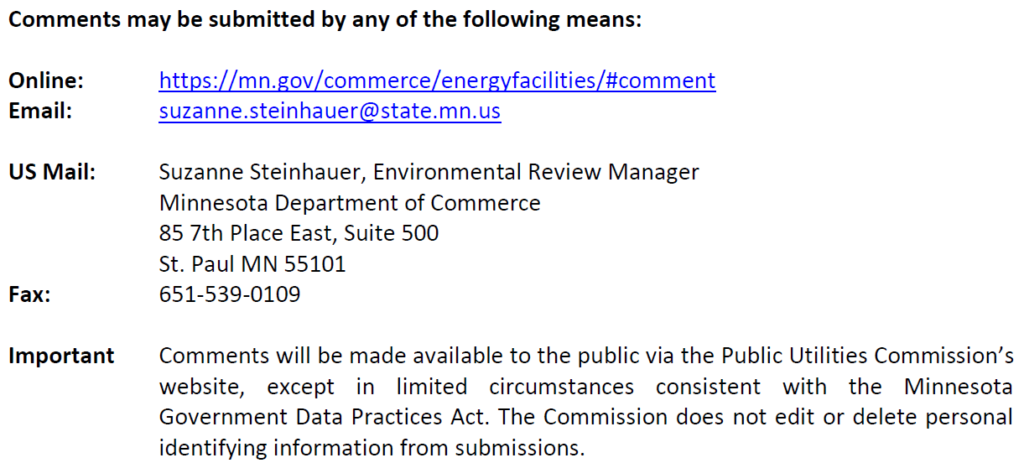Notice of BLM Lava Ridge meeting
August 22nd, 2022
As we left our Craters of the Moon Nat’l Monument campsite in Idaho in May…
… and headed southeasterly, on the way to the rather new Minidoka Nat’l Historic Site, Alan discovered that there was a Lava Ridge wind project proposed for the area.

Here’s today’s notice from BLM:
Details:
Thursday, August 25, 2022
9:00 a.m. – 5:00 p.m. Mountain Daylight Time
Virtual via Zoom – Zoom Registration
The first meeting was on July 7, 2022:
View the recorded meeting here
PUC does NOTHING about Freeborn wind noise
July 13th, 2022
Yet another example of GI/GO noise monitoring, following the GI/GO noise modeling, notice of the discrepancies between modeled noise expected and the actual noise found in the post-construction noise modeling.
It doesn’t want to embed, so here’s the link:
https://minnesotapuc.granicus.com/MediaPlayer.php?view_id=2&clip_id=1737&meta_id=205848
The noise study for Freeborn Wind at issue, Parts 1 and 2:
And Commerce-EERA “analysis” of it, with the emphasis on “anal” eh?
There was a lot of talk about the Minnesota noise standards (which are admittedly NOT designed to address wind noise), Minn. R. 7030.0040:
And not until quite late in the discussion did they even bring up the 47 dB(A) limits imposed by the “Special Condition” deal that Commission did with Freeborn:
Note that when there are levels above 47 dB(A), “the Permittee shall work with the Department of Commerce to develop a plan to minimize and mitigate turbine-only noise impacts.” Where does the landowner/resident/human “receptor” fit in? Zero consideration, evidence shows. GRRRRRRR.
Working remotely?
June 30th, 2022
Is that sort of like the “working hard” v. “hardly working” conundrum?
Last week was almost a pre-COVID “back to normal” with a trip to Freeborn County to meet with two clients, new pipeline and long-time wind. I so miss being on the road, miss trucking, and miss travel out and about to meet with folks. Timing worked so well, it was a good opportunity to take out the trailer and continue to debate about whether it’s time for the trailer to go on to new owners (oh, that mpg hurts!), to debate whether a tent is really workable. And the debate is over. Now to clean it out and sell… sigh…
The Freeborn Wind project is up at the PUC next Thursday, July 7, to address the noise studies, not that they’ll do anything — seems the primary goal is to duck and cover, not deal with noisy turbines.
And the pipeline is going to be a recurring issue. There’s the “little” line going in under Northern Natural Gas’ FERC blanket authority (seems cost/size of project determines whether NNG applies to FERC); there’s the Ventura North E-Line, part of NNG’s Northern Lights 2023 Expansion applied for at FERC earlier this year; and supposedly this month, the “Albert Lea” project. We’ll see how this goes. I know there’s natural gas storage under the Prehn home along Hwy 13, below Hwy. 60, north of Waseca, and DOH, that gas has to get there somehow. And there’s the east/west gas transmission line along Hwy. 14, through my client’s yard in Kasson (and TOO MANY others). But check the map — I didn’t know that there are this many lines.
More to follow…
The Lava Ridge wind project is likely the country’s largest wind project thus far, with turbines twice the size of those in Minnesota. Here’s the “Magic Valley” developer page: https://www.magicvalleyenergy.com/
And the BLM page for the project:
LAVA RIDGE WIND PROJECT
Cut & paste of some basic facts for the project:
BLM National NEPA Register — Lava Ridge Wind Project
The “Friends of Minidoka” are actively challenging this project, more info here, the link is dated, a cut & paste blurb from BLM:
Bureau of Land Management Extends Public Scoping for the Lava Ridge Wind Project
The prerecorded presentation and scoping posters are available on the project website at https://go.usa.gov/xFKxg.
Contact info for BLM, please contact Kasey Prestwich, Lava Ridge Wind Project EIS Project Manager, Phone: 208-732-7204, E-mail: kprestwich@blm.gov.
From that Scoping Report, here’s another, better map:
I’d expect the EIS will take at least a few more months, and perhaps not be released until next year. I’ve asked and will report in if I get a response. And here ’tis, expected that “Draft EIS will be published in September 2022 and a Notice of Availability for the Final EIS will be published in April 2023.”
Just in today (I’d requested to be on developers project list) – there’s a meeting on Saturday,11a-1p at College of Southern Idaho, Taylor Building, Rm. 276:
Recently, I learned that the Minnesota Public Utilities Commission decided that an “informal” process was to be used in reviewing the three NextEra Dodge County Wind applications and three dockets — Certificate of Need (20-865), Wind Siting (20-866), and Transmission (20-867).
This notion that an “informal” process is appropriate is bizarre — this is exactly the sort of project that needs a contested case!. A few years ago, NextEra had applied for permits for Dodge County Wind, and that project as proposed was so unworkable that they withdrew all three of the applications:
… though for sure it was also hampered by an equally bizarre proposal by Commissioner Tuma that they run a 345kV transmission line through the backyard of homes in Dodge Center! Regular folks stood up and weighed in and stopped this massive transmission line from going through their yards (in many cases, the easement would have included their homes, and many homeowners would have been displaced!).
- Dodge Center Xmsn – Mission Accomplished!
- Dodge Center Transmission in the news
- Dodge Center 345 kV transmission?
- Xmsn through Dodge Center?
- Dodge County Wind info presentation
What are these Commissioners thinking? They’re supposed to be regulators, not enablers.
Anyway, the task at this point is to file comments before the May 25 deadline. In addition to the areas above, it’s important to request a “contested case” and request that an advisory task force be established.
NEXT STEPS:
First, the easy one — Request an advisory task force, as provided by Minn. Stat. 216E.08:
So far, the Commission has not ordered an advisory task force for wind, EVER! Commerce-EERA has always used a very narrow definition of “siting” to argue against it. However, an advisory task force is exactly what’s needed to point out environmental issues and the impacts of both micro and macro siting of the wind project and transmission, i.e., this is LARGE Wind Energy Conversion System (LWECS) sited using small wind standards (Order Establishing General Wind Permit Standards, Docket No. E, G999/M-07-1102 (MPUC 2008); are all the homes (“receptors”) identified on the map; are wetlands and flood areas shown; are the maps sufficiently detailed to show 3×5 and 5×5 rotor setbacks; are easements identified and secured by this private corporation that is not a utility; impact of blinking red lights and use of new motion detected lighting system; impacts on nearby Rice Lake State Park; transmission and distribution lines identified; are all airports there, including private airports for spraying; are all sloughs and wetlands identified; all FAA applications in application; are participating and non-participating landowners regarded equally in siting and modeling; etc.
Second TO DO, and more complicated. In your own words (cut & pasting doesn’t cut it) REQUEST a referral to the Office of Administrative Hearings for a CONTESTED CASE PROCEEDING, and explain what material issues of fact need to be addressed in a contested case. Commenters thus far have raised issues that need to be addressed, the record developed, before any decision can be made. Some clues were above, and now rehashed below:
- This is LARGE Wind Energy Conversion System (LWECS) sited using small wind standards (Order Establishing General Wind Permit Standards, Docket No. E, G999/M-07-1102 (MPUC 2008) — small wind standards are not relevant to a LWECS project;
- Most wind projects miss homes in the project footprint — are all the homes (“receptors”) identified on the map and considered in siting;
- Does the project have all land rights for wind turbines (“targeted, pending, no status, and not interested” do not count, only leased. It appears that land rights are needed for 14 turbines.
- Does the project have all land rights for transmission. This is a private company with no right of eminent domain.
- Are all wetlands, calcareous fens, sloughs, and flood areas accurately mapped and impacts considered;
- Are the maps sufficiently detailed to accurately depict the 3×5 and 5×5 rotor setbacks;
- Are impacts of blinking red lights considered;
- Is the use of new motion detected lighting system approved and is FAA applications for this system and for all turbine lighting in the application;
- What are impacts on nearby Rice Lake State Park and other state land, easements, waters;
- NextEra has been fined by USFWS and is “on probation” for killing at least 150 bald eagles. Is NextEra’s eagle survey and Avian and Bat Protection Plan sufficient;
- Are all existing transmission and distribution lines identified and considered;
- Is noise modeling predictive of ability to comply with noise standards;
- Will shadow flicker be inflicted on residents?
- Has use of storage rather than transmission been evaluated;
- Is this the highest and best use for agricultural land;
- Does utility scale central station wind fit with county and township land use plans;
- Are claims that energy generated will be used in Minnesota credible, particularly considering typical powerflows to the east and south;
- Will this project directly reduce generation of CO2;
- Are all airports identified, including private airports for spraying, and are impacts considered;
- Are the impacts, risks, and costs of the turbines on aerial crop and insect spraying, medical, and hazmat helicopter flights identified and considered;
- Are participating and non-participating landowners regarded equally in siting and modeling impacts and avoidance;
- Is there a binding road use agreement with townships and counties;
- Does the decommissioning plan sufficiently protect landowners from burden of decommissioning and cost recovery in the event of operator’s failure to decommission, bankruptcy, and/or abandonment of the project;
- etc., etc., etc.
Comments are due by 4:30 p.m. on May 25th. DON’T MISS THIS DEADLINE!!
In addition to sending in your comments using options below, I also STRONGLY ADVISE you post them in eDockets. Registration is easy and immediate, and by posting to all three dockets, others will know about issues you’re concerned with and can join in and amplify these concerns.
OK, let’s get to work — it’s time to print out those documents, the revised application, later filings of maps, etc.
To access the PUC dockets go HERE to eDockets Project Database, then search for dockets 20-865 (Certificate of Need), 20-866 (Wind Siting), and 20-867 (Transmission). Just plug “20” into the “year” space, and “865” or “866” or “867” into the “docket” space.
Subscribe to the docket to get notice of filings — subscribe by clicking on a box under the “Subscribe” column heading, then click the grey “Subscribe” button, and follow the directions:
Here are links to some of the NextEra “Dodge County Wind” docket filings:
